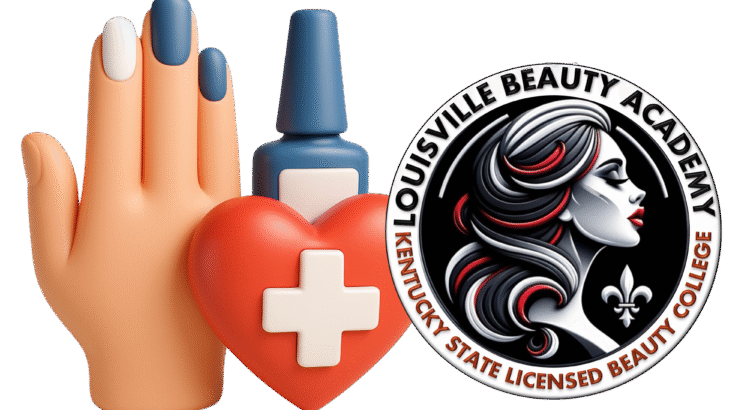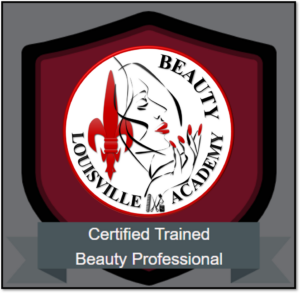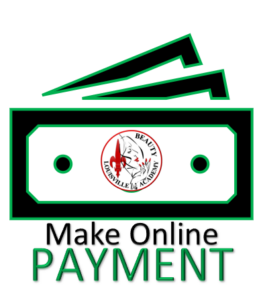Introduction
In the mid-1970s, a group of Vietnamese refugee women in California learned professional manicure skills in a training sparked by Hollywood actress Tippi Hedren. This humble beginning planted the seeds of a thriving nail salon industry dominated by Vietnamese Americans. Today, nail salons are nearly ubiquitous across America – from big cities to suburban strip malls – and Vietnamese immigrants and their descendants run a large share of them. This community’s entrepreneurial drive transformed nail care from a luxury for the elite into an accessible routine for the masses. In doing so, Vietnamese Americans have built a multibillion-dollar industry that contributes significantly to the U.S. economy, while also promoting public health and well-being through affordable grooming services and supportive salon communities.
Vietnamese Americans’ Dominance in the Nail Salon Industry
Vietnamese American entrepreneurs and workers now represent the backbone of the U.S. nail salon sector. By the mid-2010s, over half of all nail salons in the United States were owned and operated by Vietnamese Americans. This is a remarkable rise from the late 1980s, when Vietnamese technicians comprised only about 10% of the industry – a figure that grew to over 50% of nail salon workers by the late 2010s. In real terms, this means tens of thousands of Vietnamese-run small businesses. (As of 2018, the nation had roughly 56,000 nail salons and 395,000 licensed nail technicians overall.) In certain states with large Vietnamese communities, the presence is even more dominant – for example, an estimated 76% of Texas’s nail salon workforce is of Vietnamese descent. This high representation reflects how Vietnamese immigrants leveraged tight-knit social networks to enter and eventually lead an industry niche that welcomed new labor and business owners from their community. The result is a vibrant sector where Vietnamese Americans are not only employees, but also the proprietors, instructors, and suppliers supporting the nail trade.
Making Nail Care Affordable and Accessible for All
One of the most significant contributions Vietnamese Americans brought to the nail salon industry is democratizing beauty. In the early 20th century, manicures and pedicures in the U.S. were considered a pampered indulgence mainly for wealthy women, often offered only in high-end beauty parlors. This changed dramatically in the 1980s when Vietnamese immigrant and refugee women opened budget-friendly nail salons, targeting everyday working women as customers. By focusing exclusively on nail care and lowering service prices, these entrepreneurs revolutionized the market, making routine manicures and pedicures affordable to middle-class and even working-class women.
Crucially, the influx of Vietnamese-owned salons offering quality services at cheaper rates filled a gap in the beauty industry. They tapped into a huge underserved clientele: women who wanted nicely groomed nails without paying luxury prices. As one analysis notes, Vietnamese providers “lowered the price and then cornered the burgeoning but neglected market of lower-class women” for nail services. In practice, this meant a manicure or pedicure transformed from an occasional splurge into an accessible part of regular self-care for millions. By the 2010s, an estimated 20+ million Americans were getting professional manicures multiple times per year – a surge in demand largely credited to the affordability and ubiquity of Vietnamese-run salons. The radical increase in accessibility of nail care is directly tied to the hard work of Vietnamese American technicians whose efficient techniques and family-based shop models kept prices low. They turned nail grooming into what one observer called “the one luxury that is really a necessity” for women from all walks of life.
Health and Wellness Benefits of Regular Nail Care
Beyond aesthetics, routine nail care provides several health benefits – and by making these services widespread, Vietnamese American salons have positively impacted public health. Physical health is one area: regular manicures and especially pedicures help maintain hygiene and prevent minor medical issues. Pedicure treatments remove dead skin and calluses, reducing places where germs can hide and thus lowering the risk of fungal infections or skin infections on the feet. Keeping toenails properly trimmed and feet moisturized in pedicures can prevent painful problems like ingrown nails, cracked heels, and sores. The foot massages included in salon pedicures also improve circulation, which is particularly beneficial for clients with diabetes or poor blood flow, as better circulation can help ward off foot ulcers and other complications. In short, professional nail care contributes to healthier hands and feet by promoting cleanliness, early detection of issues, and proactive foot care.
Equally important are the mental health and emotional well-being benefits that come with a trip to the nail salon. A growing body of research confirms what salon-goers have long known anecdotally: beauty rituals like getting one’s nails done can boost mood and reduce stress. The pampering experience itself – taking time out to relax while someone else cares for you – has a measurable calming effect. Clients often describe feeling refreshed and more confident after a manicure or pedicure, and psychologists note that self-care practices help manage stress and improve emotional wellness. In fact, a 2023 study found that nail care (whether at home or in-salon) consistently increased positive emotions and relaxation among women. Notably, those who visited salons reported greater mood boosts than those who did their own nails, highlighting the special value of the salon environment. Taking care of one’s appearance in a welcoming setting can enhance self-esteem and mental vitality, leaving clients not only polished on the outside but also happier on the inside. This suggests that the widespread availability of affordable nail services – thanks to Vietnamese American salons – has given many women an accessible form of stress relief and personal uplift in their routine lives.
Nail Salons as Community Spaces and Emotional Support Networks
Walk into a busy nail salon on a weekend, and you’ll notice something beyond the whirl of nail files and polish bottles: a unique social space predominantly for women. Nail salons, often run and staffed by Vietnamese American women, have become informal community hubs and “safe spaces” for their clients. Unlike many other public or commercial spaces, salons are women-centered environments where patrons can unwind without judgment. “Every woman has fingernails,” one commentator quipped, and in the nail salon women of all ages and backgrounds can bond over the shared activity of beautifying their nails. The salon setting invites clients to sit back and be taken care of, creating an atmosphere where they can either enjoy quiet “me time” or engage in friendly chatter with manicurists and other patrons. Many women cherish this time as an oasis from daily responsibilities – indeed, some deliberately ask their nail tech to slow down the service, just so they can prolong the relaxation.
Nail salons also facilitate social connection and emotional support at the community level. It’s common for clients to develop friendly relationships with their Vietnamese American nail technicians over years of regular visits. Light conversations about family, work, or daily life during appointments foster a sense of trust and camaraderie. Studies indicate that this kind of casual personal sharing (“light self-disclosure”) in the salon chair enhances the psychological benefits of the service, making clients feel even more positive and comforted. In essence, the nail salon can double as a supportive space where women swap stories, receive words of encouragement, and feel heard – much like a mini social outlet or support group. For immigrant Vietnamese salon owners and workers, the salon community often extends to fellow immigrants and neighbors, further strengthening local support networks. As one writer observed, nail salons are a safe space for women to be on their own – free to relax, bond with friends or family, and momentarily escape other stresses. By providing these welcoming communal environments, Vietnamese American salons have contributed quietly to community mental health, offering women a dependable place to de-stress and connect.
Economic Contributions: Entrepreneurship, Jobs, and Revenue
The nail salon industry in the U.S. is not just a cultural phenomenon – it’s also a significant economic engine, and Vietnamese Americans have been driving much of its growth. What began as small family-run shops in the 1980s has blossomed into a multibillion-dollar industry. In recent years the U.S. nail salon sector was valued around \$8–9 billion in annual revenue, reflecting the steady demand for manicures, pedicures, and related services nationwide. Vietnamese Americans’ extensive ownership of salons means they are responsible for a large portion of this revenue generation. By 2021, an estimated 51% of U.S. nail salons were Vietnamese-owned, accounting for billions of dollars of economic activity each year. Industry analysts project continued robust growth (approximately 6% annually through 2030), indicating that these immigrant-founded businesses will remain a vibrant part of the beauty economy for years to come.
Job creation and small-business entrepreneurship are key aspects of this contribution. The proliferation of Vietnamese-run salons has created hundreds of thousands of employment opportunities – not only for Vietnamese Americans, but also for many other immigrant and American workers who find jobs as manicurists, receptionists, or salon managers. These salons tend to be mom-and-pop establishments (over two-thirds have five or fewer employees), which means Vietnamese owners are directly creating local jobs and self-employment opportunities at the community level. As immigrants with limited English skills found a foothold in this trade, many were able to transition from wage workers to small business owners, lifting their income and stability. Nationwide, one can find Vietnamese American families who own multiple salon locations, employing relatives and staff, and contributing to the tax base of their towns and cities. By filling retail spaces in shopping centers and urban neighborhoods, these salons also stimulate secondary economic effects – they draw foot traffic that benefits nearby businesses and they purchase supplies (polishes, equipment, furniture) often from Vietnamese-linked supply chains, further multiplying their economic impact. In summary, Vietnamese Americans have transformed the nail salon sector into an exemplar of immigrant entrepreneurship, generating billions in revenue, creating jobs, and energizing local economies through their network of small businesses.
Upward Mobility and Family Success
The success of Vietnamese Americans in the nail salon industry has not only benefited the entrepreneurs and workers directly involved – it has also helped fuel upward mobility for their families and the next generation. For many Vietnamese refugees and immigrants who arrived with little wealth, opening a nail salon or working as a nail technician provided a reliable livelihood and a path to financial stability. These small businesses often became family enterprises, with husbands, wives, siblings, and cousins pooling resources to open salons and keep them running. The income earned and wealth built – modest at first, but growing over time – enabled families to buy homes, support extended relatives, and crucially, invest in the education of their children. Vietnamese salon owners have famously poured long hours into work so that their children could focus on school.
As a result, the U.S.-born and raised children of Vietnamese nail salon workers have achieved remarkable academic success, reflecting a classic immigrant trajectory of rising through education. Nearly 45% of second-generation Vietnamese Americans graduate from college, a rate that far outstrips their refugee parents’ educational levels and even exceeds the U.S. average. This high college completion rate is a testament to how the nail salon business – with its relatively low entry barriers but potential for steady earnings – served as an economic springboard. The first generation’s labor in salons financed tuition and created a stable home environment, setting the stage for their sons and daughters to attend universities and pursue professional careers. Sociological studies in Los Angeles and other hubs of the Vietnamese diaspora have noted that Vietnamese Americans often channel their entrepreneurial gains into educating their children, seeing college degrees as the real payoff of their sacrifices. Indeed, the rise of the Vietnamese-dominated nail salon industry has gone hand-in-hand with the rise of Vietnamese American doctors, lawyers, engineers, and other professionals emerging from the next generation. This pattern of upward mobility through hard work and education underscores the broader contribution of Vietnamese nail salons: not only do they enrich the economy in the present, but they have also uplifted an entire community, enabling refugee families to firmly plant themselves in America’s middle class.
Conclusion
From the polish on millions of manicured nails to the billions of dollars in revenue and wages, the imprint of Vietnamese Americans on the nail salon industry is profound. In a span of 40–50 years, this community transformed a niche luxury trade into a dynamic, accessible service industry that touches the lives of everyday Americans. Their contributions can be seen in economic terms – thriving small businesses, job creation, and entrepreneurial innovation – and also in public health and social terms – improved personal grooming hygiene, accessible stress-relief services, and supportive salon communities for women. The story of Vietnamese American nail salons is, at its heart, a story of resilience and opportunity: refugees and immigrants seized an opening in the beauty market, worked tirelessly, and built an industry that not only provided for their own families but also delivered affordable care and comfort to countless customers. In doing so, they have exemplified the ideals of the American Dream – using ingenuity and hard work to achieve mobility – all while adding a bright splash of color and well-being to the fabric of American society.
Sources
- Pham, Mila. “Manicure Memoir: Reflecting on the History of Vietnamese Nail Salons.” Kollaboration SF Blog. May 11, 2021.
- Letien, Kaitlyn. “Acrylics Ambitions and American Dreams: The Rise of the Vietnamese Nail Salon Industry.” High School Insider (LA Times). May 6, 2025.
- Kuzhiyil, Fiza. “How Vietnamese families built community, revolutionized nail industry over 50 years.” Houston Landing. May 1, 2025.
- Nir, Sarah Maslin. “What Getting Your Nails Done Really Means.” The Cut (New York Magazine). May 11, 2015.
- Tran, Michael, DPM. “4 Health Benefits of Routine Pedicures.” AllCare Foot & Ankle Center Blog. 2020.
- Dolan, Eric. “New study sheds light on the impact of manicures on women’s psychological well-being.” PsyPost. Oct 28, 2023.
- Rumbaut, Rubén et al. Immigration and Intergenerational Mobility in Metropolitan Los Angeles (IIMMLA). Russell Sage Foundation, 2008.
- UCLA Labor Center. Nail Files: A Study of Nail Salon Workers and Industry (Report). Nov 2018.






